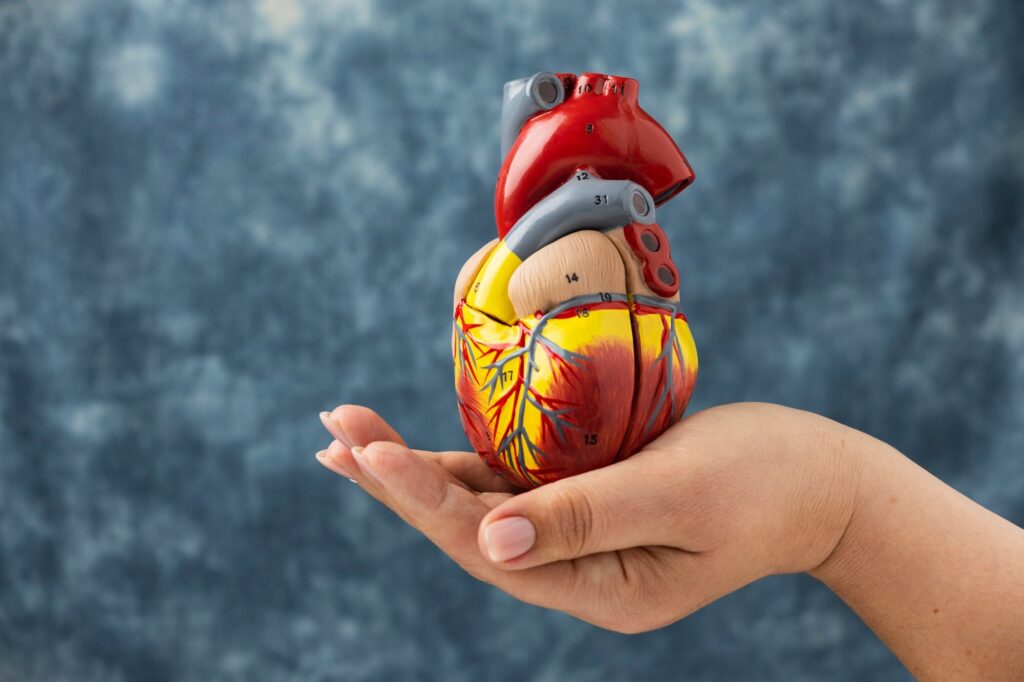Cardiorespiratory fitness (CRF), also known as cardiorespiratory endurance or aerobic fitness, is a crucial measure of overall health and well-being. It reflects the ability of the circulatory and respiratory systems to supply oxygen to working muscles during sustained physical activity.
1 While the concept might seem abstract, understanding CRF becomes much clearer with concrete examples. This blog post will delve into what constitutes a strong example of cardiorespiratory fitness, exploring various scenarios and highlighting the physiological processes involved.

Defining Cardiorespiratory Fitness: A Recap
Before we jump into examples, let’s briefly revisit the definition of CRF. It’s not simply about how strong you are or how much you can lift. Instead, it focuses on the efficiency of your heart, lungs, and blood vessels in delivering oxygen to your muscles and removing waste products during prolonged activity. A high level of CRF allows you to sustain physical exertion for longer periods without fatigue, improving your overall physical capacity.
A Stellar Example: The Marathon Runner
Perhaps the most classic example of exceptional cardiorespiratory fitness is the marathon runner. Consider an individual completing a 26.2-mile marathon. This feat demands a high level of CRF due to the prolonged and continuous nature of the activity. Let’s break down why this is such a strong example:
- Sustained Effort: A marathon takes several hours to complete, requiring the runner’s cardiorespiratory system to work continuously at a moderate to high intensity. This sustained effort is a hallmark of CRF.
- Oxygen Delivery: The runner’s muscles require a constant and substantial supply of oxygen to fuel their activity. The heart must pump blood efficiently, the lungs must effectively extract oxygen from the air, and the blood vessels must deliver that oxygen to the working muscles. The marathon runner’s body is highly efficient at this process.
- Waste Removal: As muscles work, they produce waste products like carbon dioxide and lactic acid. The cardiorespiratory system is also responsible for removing these waste products, preventing them from accumulating and causing fatigue. A fit individual can clear these byproducts more effectively.
- Endurance: The ability to endure the physical stress of a marathon is a direct reflection of high CRF. The runner’s body is able to withstand the prolonged exertion without succumbing to fatigue prematurely.
- Physiological Adaptations: Marathon runners undergo significant physiological adaptations that contribute to their high CRF. These adaptations include:
- Increased Heart Size and Strength: The heart becomes larger and stronger, allowing it to pump more blood with each beat (stroke volume).
- Increased Capillary Density: The number of capillaries in the muscles increases, improving oxygen delivery and waste removal.
- Improved Lung Capacity and Efficiency: The lungs become more efficient at taking in oxygen and expelling carbon dioxide.
- Increased Red Blood Cell Count: The number of red blood cells, which carry oxygen, may increase.
- Improved Mitochondrial Function: Mitochondria are the “powerhouses” of cells, and their function improves with training, enhancing the muscles’ ability to utilize oxygen.
Beyond the Marathon: Other Examples of Strong CRF
While the marathon runner provides a compelling example, strong cardiorespiratory fitness manifests in various other activities:
- Long-Distance Cycling: Similar to marathon running, long-distance cycling requires sustained effort and efficient oxygen delivery to working muscles. Cyclists with high CRF can maintain a steady pace for extended periods.
- Swimming: Swimming is a full-body workout that demands high levels of CRF. Swimmers must coordinate breathing with their strokes while propelling themselves through the water, requiring efficient oxygen uptake and utilization.
- Cross-Country Skiing: This activity combines skiing with elements of running and requires significant endurance and CRF. It engages both the upper and lower body, demanding efficient oxygen delivery to a large muscle mass.
- Triathlon: Triathlons, which involve swimming, cycling, and running, are excellent examples of events requiring exceptional CRF. Participants must transition between different activities while maintaining a high level of exertion.
- High-Intensity Interval Training (HIIT): While HIIT involves short bursts of intense activity, it can also improve CRF by challenging the cardiorespiratory system and promoting adaptations. However, the recovery between intervals is also crucial for developing CRF.
- Everyday Activities: Even everyday activities can demonstrate good CRF. For example, someone who can climb several flights of stairs without becoming winded or easily walk or jog for a sustained period without fatigue exhibits good cardiorespiratory fitness. This is also seen in individuals who are able to keep up with their active children without feeling overly exhausted.
What a Lack of CRF Looks Like
Conversely, understanding what a lack of CRF looks like helps to clarify its importance:
- Easily Winded: Individuals with low CRF become winded easily during even moderate physical activity.
- Rapid Heart Rate: Their heart rate increases quickly with minimal exertion.
- Fatigue: They experience fatigue quickly and need frequent breaks during activity.
- Shortness of Breath: They may experience shortness of breath even after light exercise.
- Difficulty Performing Everyday Tasks: Simple tasks like climbing stairs or carrying groceries can become challenging.
The Importance of CRF for Health
CRF is not just about athletic performance. It’s a crucial indicator of overall health and is associated with numerous benefits:
- Reduced Risk of Cardiovascular Disease: High CRF is linked to a lower risk of heart disease, stroke, and other cardiovascular problems.
- Improved Blood Pressure and Cholesterol Levels: Regular exercise that improves CRF can help lower blood pressure and improve cholesterol profiles.
- Weight Management: CRF is essential for burning calories and maintaining a healthy weight.
- Improved Mood and Mental Health: Exercise has been shown to have positive effects on mood and reduce symptoms of anxiety and depression.
- Increased Longevity: Studies have shown that individuals with higher levels of CRF tend to live longer.
Improving Your Cardiorespiratory Fitness
Improving CRF requires regular aerobic exercise. Here are some key recommendations:
- Choose Activities You Enjoy: Find activities that you find enjoyable to increase adherence.
- Start Gradually: Begin with moderate intensity and gradually increase the duration and intensity of your workouts.
- Be Consistent: Consistency is key to improving CRF. Aim for at least 3-5 sessions per week.
- Listen to Your Body: Pay attention to your body’s signals and rest when needed.
Conclusion: A Foundation for an Active Life
Cardiorespiratory fitness is more than just a number or a test result. It’s a reflection of your body’s ability to function efficiently and sustain physical activity. From the elite marathon runner to the individual who can easily climb the stairs, strong CRF is a foundation for an active and healthy life. By understanding what constitutes good CRF and taking steps to improve it, you can enhance your overall well-being and enjoy a higher quality of life. It’s a gift you give yourself, a gift of vitality and the ability to embrace the joys of movement.





Leave a Reply
You must be logged in to post a comment.